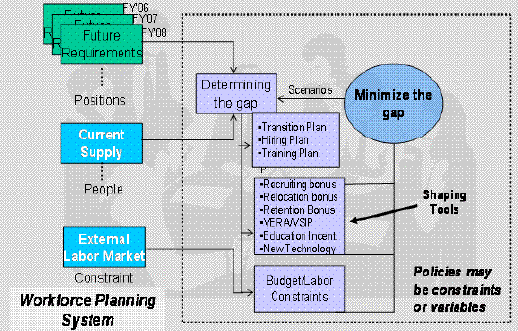Human Resource Management Systems (HRMS)
Definition: Human Resource Management Systems (HRMS) provide a link between human resource management
and information technology.
HRMS allow enterprises to automate many aspects of human resource management, with the dual
benefits of reducing the workload of the HR department as well as increasing the efficiency
of the department by standardising HR processes.
The field of human resources is one that is often overlooked in enterprise management. This
situation is aided by the fact that an efficient Human Resources department should function
without fanfare. For example, when a project team successfully launches a product on time and
within budget it is hailed as a great success. When the HR department manages the administration
of the enterprise successfully it can go virtually unnoticed – after all, the Human Resources
department is simply expected to work, only attracting attention when there are problems.

The reality, however, is very different. The HR department plays a vital role in ensuring the
smooth running of an enterprise – most importantly by tracking and analysing the timekeeping and
work patterns of the workforce, allowing management better information on which to form strategies.
The importance of human resources has not gone unnoticed by the software industry. There is now a
wide range of applications available to aid the HR department in their tasks, making possible the
automation of certain tasks and aiding in the organisation of many others.
HRM software systems (from vendors such as
Oracle and
Ascentis) are broadly defined by the four
basic responsibilities of the HR department, and as such typically contain standalone modules to
address the needs of each responsibility:
Payroll Module: The payroll module greatly reduces the workload of the HR department by automating the payroll
process, allowing HR to ensure that payroll functions are completed on time and without errors.
At its most basic level the payroll module is supported by the manual entry of timekeeping and
attendance data from paper-based timesheets submitted by the workforce. More advanced systems
track employee timekeeping through automatic systems, connected to either a ‘clocking in’ system
or a tracker connected to the desktop computers of the employees.
Once attendance data is fed into the system, the payroll module automatically calculates payment
amounts and various deductions such as income tax before generating paychecks and employee tax reports.
Time and Labour Management Module: The time and labour management module is designed to collate and analyse employee timekeeping
information for the purposes of organisational cost accounting.
By sourcing data directly from the timekeeping devices and methods used to calculate payroll this
module can provide management with valuable data regarding the use of labour resources within the enterprise.
Benefit Administration Module: The benefit administration module provides HR personnel with the capacity to monitor and manage
employee participation in a range of benefit programs. These programs can range from programs
related to the wellbeing of the workforce (such as health insurance and pension schemes) to
profit making programs (such as stock option plans and profit sharing). module provides HR personnel with the capacity to monitor and manage
employee participation in a range of benefit programs. These programs can range from programs
related to the wellbeing of the workforce (such as health insurance and pension schemes) to
profit making programs (such as stock option plans and profit sharing).
HR Management Module: The HR management module provides a range of HR solutions ranging from analyses of application
data through to the basic demographic data of employees.
The management module allows HR personnel to effectively manage the Human Capital Pool (HCP)
available within the enterprise, in that it
keeps track of the training and development of the
workforce and the skills and qualifications of each employee. Advanced HR management modules can
also automate the process of application for positions by capturing application data and entering
it to a relevant database.
Benefits of HRMS
While these modules each provide benefits to the HR department itself, the applications also
aid the enterprise as a whole.
HRM systems convert human resources information into a digital format, allowing that information
to be added to the knowledge management systems of the enterprise. The result of this is that HR
data can be integrated into the larger Enterprise Resource Planning (ERP) systems of the enterprise.
In analysing enterprise wide resource usage this data can prove invaluable. Data related to the
time usage of the workforce can enhance the
decision making abilities of management, allowing the
HR department to form an integral aspect of strategy formation for the enterprise as a whole.
|

 module provides HR personnel with the capacity to monitor and manage
employee participation in a range of benefit programs. These programs can range from programs
related to the wellbeing of the workforce (such as health insurance and pension schemes) to
profit making programs (such as stock option plans and profit sharing).
module provides HR personnel with the capacity to monitor and manage
employee participation in a range of benefit programs. These programs can range from programs
related to the wellbeing of the workforce (such as health insurance and pension schemes) to
profit making programs (such as stock option plans and profit sharing).